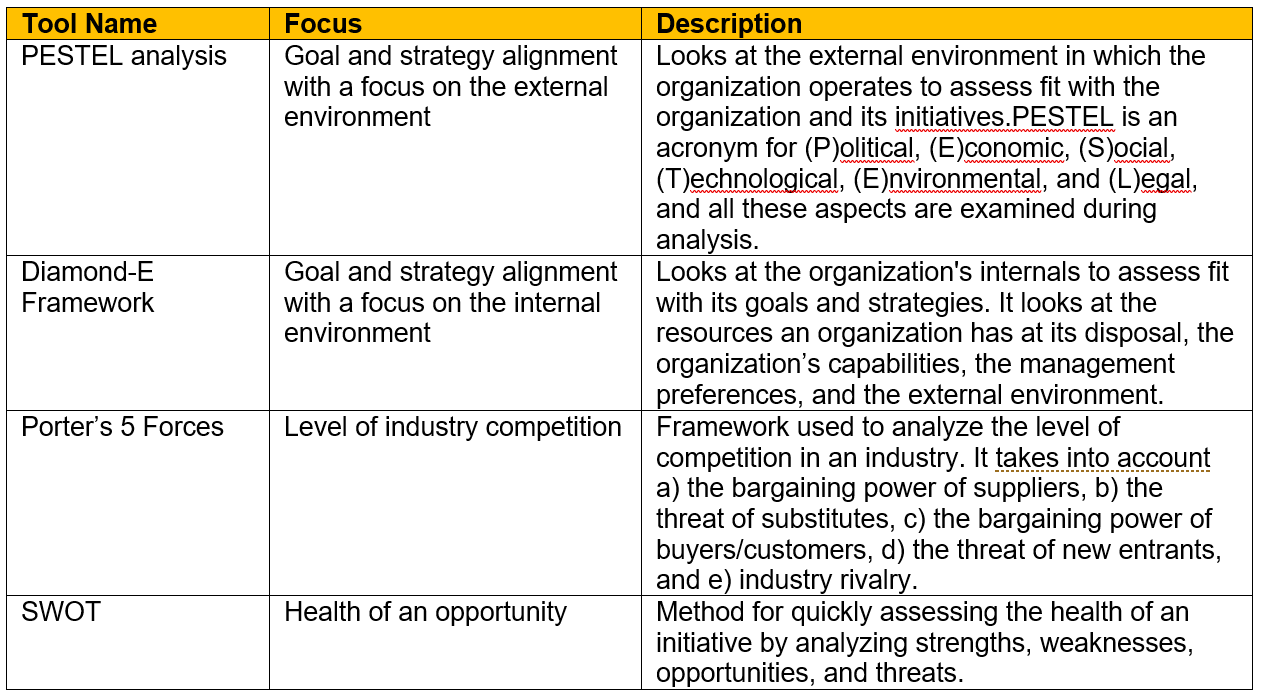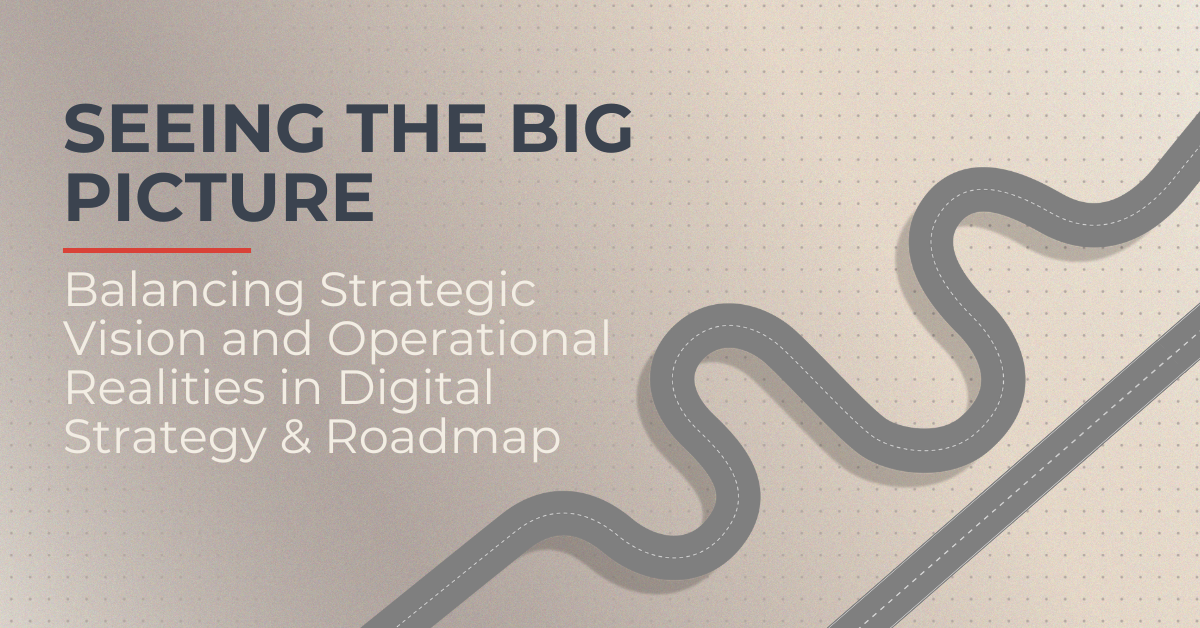Greg Kaczmarz
Is your organization aligned and positioned for success? According to author and speaker
Simon Sinek (www.startwithwhy.com), organizations that inspire have at their cores an understanding of why they exist. This understanding of purpose or cause manifests itself in how these organizations operate and is front and center when they and their leaders communicate.
This state of existence starts at the highest level of the organization and filters throughout. As your organization undergoes rapid change in a digital age – as it must do to compete and thrive due to inevitable disruption – having organizational alignment is critical. This blog will focus on how to align an organization to give it the best chance for success. It will provide both a framework and tools to help you, at the very least, navigate through conversations and business situations in which you might find yourself.
Company Mission and Vision
I've scanned many websites looking for mission and vision statements. Few organizations have and promote them, and those that do often have mediocre or poorly written ones (e.g. too long, uninspiring, misaligned). I’ve had the pleasure of working for many organizations and even more great people throughout my consulting career; very few of those people can recall their organizations’ mission or vision statements.
have and promote them, and those that do often have mediocre or poorly written ones (e.g. too long, uninspiring, misaligned). I’ve had the pleasure of working for many organizations and even more great people throughout my consulting career; very few of those people can recall their organizations’ mission or vision statements.
Simply put, the mission is why the organization exists. A well designed and managed organization derives profit from the fulfillment of its mission; its mission is not simply to make a profit. For example, ‘our mission is to cater high quality meals to Canadian airlines by using the best ingredients meticulously combined so that our customers and their customers experience our passion’.
Sometimes an organization will refer to its mission as its purpose, as we do at Online. Our purpose is to “do the extraordinary so that together we are part of something special.”
The vision is what the organization is striving for; it’s where the organization wants to be in the future. Each organization must define this 'future' timeframe for itself. For example, ‘our vision is to be the only trusted partner that North American airlines turn to for their catered meals.’
Our vision at Online, “to build and grow our organization to be one of North America’s premier business and technology consulting companies”, is easy to remember not only because it can be stated in one sentence but also because it truly is at the core of what each of us at Online strives for. This holds true when I’m working with clients to help them fulfill their missions and achieve their visions, as well as when I’m fulfilling my role as a Principal Consultant – helping Online achieve its vision.
Note that the mission and vision should not be essays; they should be short, concise, relevant, and inspire so that people remember them!
Guiding Principles, Goals, Outcomes, Objectives, and Strategies
Guiding principles
Guiding principles shape an organization's goals and are really the overarching values  that the organization holds dear. They help guide decision making at all levels. In some cases, the guiding principles are incorporated into the mission. Regardless, they need to be in alignment with the mission and vision. Some examples of guiding principles are ‘customers first’, ‘efficient operations,’ ‘ethical business behaviour’, and ‘uncompromising quality’. Some organizations call these tenets or package them into a credo. At Online, our Culture Credo includes statements that speak to passion, integrity, and forward thinking with phrases like “we are energized by what we do”, “we do what’s right”, and “we are always evolving”. And, it’s reassuring to see these statements in action each and every day as we would not be able to achieve our vision without such a culture.
that the organization holds dear. They help guide decision making at all levels. In some cases, the guiding principles are incorporated into the mission. Regardless, they need to be in alignment with the mission and vision. Some examples of guiding principles are ‘customers first’, ‘efficient operations,’ ‘ethical business behaviour’, and ‘uncompromising quality’. Some organizations call these tenets or package them into a credo. At Online, our Culture Credo includes statements that speak to passion, integrity, and forward thinking with phrases like “we are energized by what we do”, “we do what’s right”, and “we are always evolving”. And, it’s reassuring to see these statements in action each and every day as we would not be able to achieve our vision without such a culture.
Goals
Although there are differing opinions on the definition of a goal, I lean toward the following: a goal is a broad statement of something that the organization wants to achieve. Note that, in some literature, goals are recommended to be SMART (specific, measurable, attainable, relevant, and timed). Regardless, goals should be in alignment with the mission, vision, and guiding principles. Using the guiding principles given above, examples of aligned goals are:
- ‘To be known for exceptional customer service by 2019’, and
- ‘To be an industry leader in efficient operations within the next 3 years’
On a more personal note, you may have set a goal ‘to become more physically fit in the New Year.’
Outcomes
Outcomes are what the organization expects to happen as a result of achieving its goals. Outcomes should be SMART. For example, with a goal of ‘to be known for exceptional customer service by 2019’, outcomes could be:
- ‘An increase in the number of repeat customers by at least 20% from 2017 to 2018’,
- ‘An increase in customer satisfaction by at least 25% from Q4, 2017 to Q4, 2018’, and
- ‘A decrease in the number of customer complaints each month throughout 2018’
Objectives
Objectives are targets the organization must hit along the way to achieving the goals and producing the desired outcomes. Objectives are also SMART. Examples of objectives to reach the goal of ‘to be known for exceptional customer service by 2019’ are:
- ‘To implement a new return policy and communicate it internally and externally (on the website) by end of January 2018’,
- ‘To re-train all customer service representatives by end of February 2018’, and
- ‘To implement a new customer relationship management tool by end of March 2018’,
Strategies
Strategies describe how an organization plans to achieve its goals. They include the steps required to meet objectives and guide the organization toward its goals. Some of these steps include the formation of programs and projects, each of which will have an associated business case.
Figure 1 – Framework Component Relationships below explains what can happen if some of the alignment framework is missing.
Figure 1 – Framework Component Relationships

Alignment Evaluation
It pays dividends to periodically stop, step back, and evaluate your organization, its capabilities, its goals, its strategies, the intended outcomes, and the external environment. If an organization has all the right capabilities and goals but is operating in an environment that is not receptive or conducive to its operations or products, success will be difficult. However, there are tools that can be used for evaluation, and the leadership team should be using them. Below in Figure 2 – Evaluation Tools, you will find brief descriptions of a few such tools (there is ample information on the Internet about them so I won’t explain them in detail).
Figure 2 – Evaluation Tools

Each tool offers a different perspective on the organization and/or the environment in which it operates. By going through the evaluation exercise, a clearer picture of alignment and capabilities takes shape, providing leadership with the insight required to move forward appropriately and confidently.
An Organization's Greatest Asset
An organization's greatest asset is its people because it's the people who make - or  break - the organization. To be able to perform at their best, employees need a purpose and they need to see vision, organizational alignment, and leaders who are invested. Employees are very perceptive and, because they spend the better part of the day with the organization, can easily become affected by turmoil. Extending beyond the short term, turmoil results in low morale, reduced productivity, and resignations. I once worked for an organization that was acquired by another organization; it went through no less than five name changes and significant structural change over a relatively short timeframe. The vision was unclear and misalignment occurred. Believe me when I tell you that this had an impact on morale and retention.
break - the organization. To be able to perform at their best, employees need a purpose and they need to see vision, organizational alignment, and leaders who are invested. Employees are very perceptive and, because they spend the better part of the day with the organization, can easily become affected by turmoil. Extending beyond the short term, turmoil results in low morale, reduced productivity, and resignations. I once worked for an organization that was acquired by another organization; it went through no less than five name changes and significant structural change over a relatively short timeframe. The vision was unclear and misalignment occurred. Believe me when I tell you that this had an impact on morale and retention.
Summary
To weather change through the storm of digital disruption, it is crucial for an organization to be properly aligned.
An organization needs:
- A clear and well communicated mission and vision
- Goals that are aligned with the guiding principles, are supported by SMART objectives, and result in SMART outcomes
- Strategies to achieve the objectives and goals
- Tools to evaluate and/or formulate goals, strategies, competition, and opportunities
- Employees at all levels who are willingly invested in the journey
Through my work at Online, I see the value in understanding a client’s organizational alignment. I work with them to enhance their positions, and I strive to align my efforts to provide the most value.
Knowing this framework and the related tools will help you understand your organization's gaps, better configure it to remediate these gaps, and be in a position to better support it. Is your organization properly aligned for success? If so I'd love to hear about your company's mission and vision statements. Feel free to leave a comment below!
You can learn more about Online's Business Consulting practice by clicking here.




Submit a Comment